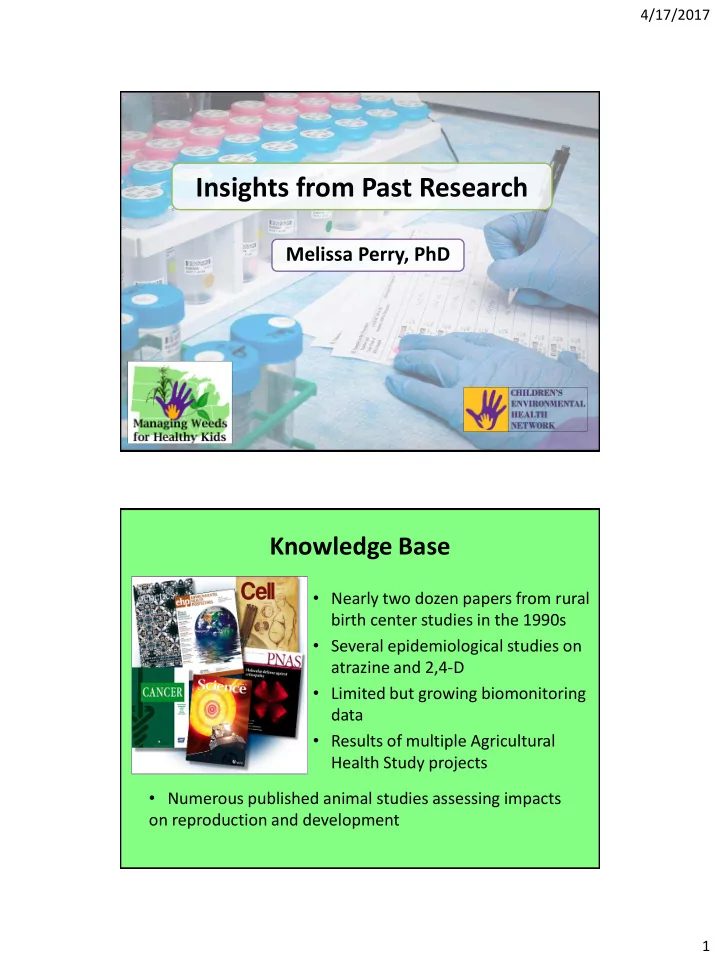

4/17/2017 Insights from Past Research Melissa Perry, PhD Knowledge Base • Nearly two dozen papers from rural birth center studies in the 1990s • Several epidemiological studies on atrazine and 2,4-D • Limited but growing biomonitoring data • Results of multiple Agricultural Health Study projects • Numerous published animal studies assessing impacts on reproduction and development 1
4/17/2017 Biomonitoring Confirms Widespread Herbicide Exposures Glyphosate and AMPA (primary glyphosate metabolite) residues in human urine have been rising in the U.S. population since around 2005, and have increased about a 4-fold in many people. In 2009-2010, CDC sampled the urine of 2,747 people… CDC Study Results • Geometric mean of urinary 2,4-D levels was 0.308 µg/l (microgram per liter, or ppb) (CDC, 2015) • U.C. San Francisco team found glyphosate residues in the urine of 93% of study participants • Detailed results for glyphosate residues as reported by (Adams et al., 2016): Glyphosate Residue Type Number of Samples (µg/l) Women 75 2.9 Men 56 3.3 Children 7 3.6 2
4/17/2017 Birth Center Study Results Glyphosate, 2,4-D, and dicamba were among the herbicides identified as increasing the risk of adverse reproductive outcomes Key Insight Greatest risk of herbicide- induced reproductive problems and birth defects occurs when the period from one month prior to conception through the first trimester of pregnancy coincides with the herbicide spraying season. References: (Arbuckle et al., 2001; Chevrier et al., 2011; Garry et al., 1996, 2002; Rappazzo et al., 2016; Schreinemachers, 2003, 2010; Winchester et al., 2016) 3
4/17/2017 So, what is the spray season in the Midwest? • Historically, heavy herbicide spray season lasted 6 weeks to 2 months • New GE herbicide-resistant crops will extend the spray season to at least 4 months • Mid to late summer applications will lead to new routes of exposure via food, drinking water, and the air Key Study: Pesticide Applicators and Farm Families in the Minnesota’s Red River Valley (Garry et al., 1996, and 2002) • Highest odds ratio across all associations for glyphosate and neurobehavioral disorders (ADHD; OR=3.6) • Glyphosate applied by one or both parents of 6 children with ADD/ADHD, out of a total 14 • Study took place before widespread planting of GE-HR crops 4
4/17/2017 Other Key Insights from Garry et al., 2002 • Only 63% of birth defects diagnosed in first year of an infant’s life • 26% diagnosed at age 3 or later • Need to track children for several years to fully capture adverse birth outcomes 5
Recommend
More recommend